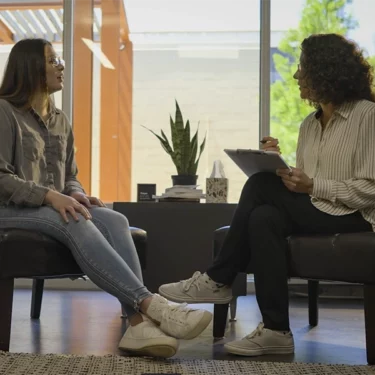Harm reduction advocates have never had an easy journey.
That doesn’t stop Deborah Krauss, program coordinator with the Iowa Harm Reduction Coalition, from climbing into her Kia Optima several times a week to make long trips through her state’s wide open spaces.
Krauss delivers harm reduction supplies to people who use drugs and rely on her organization for clean syringes, naloxone and other life-saving resources.
“Demand is pretty high, especially in the rural areas,” she said. “It’s nothing for me to drive a hundred miles a day.”
Krauss isn’t alone. Hundreds of harm reduction advocates throughout the nation are on the same journey. They work tirelessly to provide supplies and educate people about harm reduction – a wide range of approaches including syringe service programs (SSPs), distribution of naloxone to reverse overdoses and drug checking equipment to ensure drugs aren’t laced with fentanyl – in the midst of a devastating overdose crisis and a pandemic that has contributed to overdose deaths.
To address the nation’s overdose crisis the Centers for Disease Control and Preventions (CDC) has funded grants, administered by the National Council for Mental Wellbeing, to promote harm reduction strategies through a series of grants to organizations across the country – including the Iowa Harm Reduction Coalition – with harm reduction initiatives.
The National Council formally announced this month the 16 recipients of Preventing Overdose & Increasing Access to Harm Reduction Services during the COVID-19 Pandemic grants, which were supported by the CDC.
An Epidemic Within a Pandemic
Krauss and a colleague at the Iowa Harm Reduction Coalition, Abby Souder, are part of a network of harm reduction advocates witnessing the toll the overdose crisis has taken on communities across the country, from major metropolitan areas to farm towns throughout the heartland.
CDC data suggests overdose deaths began to increase in 2019, then rapidly escalated once the COVID-19 pandemic struck. Public health officials cite many reasons for the increase in deaths during the pandemic. Quarantines resulted in more people using drugs alone, increasing the risk of death from an overdose. Drugs also become more tainted. The drugs people used also changed. Opioids were no longer the only drug causing alarm among public health officials. Methamphetamine use grew rapidly.
All those trends have continued in 2021, and the road ahead for harm reduction advocates remains as difficult as ever – resources can be scarce and local support can be even harder to find.
“People just don’t have access to safe supplies,” Souder said. “Demand is greater than ever.”
That’s where harm reduction advocates stepped in.
“I can’t overstate how many new participants we have,” said Anna McConnell, executive director at Maine Access Points. “Our service is skyrocketing.”
While the COVID-19 pandemic has overshadowed the nation’s overdose epidemic, it has also demonstrated the important role harm reduction advocates play in their communities.
“So many places that folks have relied on drastically reduced their services or aren’t around any longer,” said Alex Bradley, outreach manager at HIPS, a harm reduction advocate in Washington, D.C. “Now, more people are using alone, and that’s a real driver of the overdose crisis.”
HIPS saw a 20% increase in encounters for its syringe exchange program – client visits to receive safe supplies – in 2020 compared to 2019.
Prevention Point Philadelphia distributed 3.2 million syringes in fiscal year 2019. In fiscal year 2020, which ended in the midst of the pandemic in June 2020, the harm reduction organization distributed nearly 5.9 million syringes.
Prevention Point also distributed more than 11,000 doses of naloxone, the prescription overdose reversal drug, during the 12-month period ending in June 2020.
“We pour naloxone out like water,” said Jose Benitez, executive director of Prevention Point Philadelphia. “When we see a trend in overdoses – an increase – we send a team out to train people to use Narcan. What we’ve seen as a result is a corresponding drop in overdose deaths.”
The Dave Purchase Project/Tacoma Needle Exchange initiated “no contact” deliveries, and demand for the service increased 150%, from 40 deliveries per week to 100.
The Iowa Harm Reduction Coalition also has increased deliveries, and those deliveries are met with increasing gratitude.
“I’ve never had a negative interaction with anyone getting our services,” Krauss said. “They say ‘I can’t believe you do this.’ They’re so grateful that someone cares.”
Innovation in a Crisis
In addition to ramping up to meet rising demand, harm reduction advocates also developed
new strategies.
Never Use Alone launched in August 2019 so people who use drugs could remain connected to a volunteer over the phone while injecting. Volunteers, who must have an exact location of the person injecting, can call for medical help if a person overdoses.
Trac-B Exchange, in Nevada, installed five vending machines throughout Las Vegas that dispense syringes, naloxone and other supplies for free.
NEXT Distro, in New York, launched a mail-distribution service that promotes open access to safe supplies and helps clients avoid the crushing stigma attached with substance use by providing anonymity. NEXT Distro offers one of the most practical, effective harm reduction strategies available to organizations trying to reduce overdose deaths.
It allows partners like the Iowa Harm Reduction Coalition and Maine Access Points to overcome geographic hurdles by serving clients in vast, rural areas more easily.
“Their model is incredibly timely,” said Sheila Vakharia, deputy director, department of research and academic engagement, at the Drug Policy Alliance, which supports drug policy reform.
It’s also compassionate, say harm reduction advocates, because it prevents clients from having to purchase naloxone from the pharmacists at their local drug store.
NEXT Distro, founded in 2017, has partnerships with organizations in 34 states to distribute syringes, naloxone and other safe supplies. Through those partnerships, it has distributed supplies to households in 45% of counties – about 20,000 households in all.
“Harm reduction is about mutual aid – people caring for other people,” NEXT Distro founder and executive director Jamie Favaro said.
What’s heartbreaking, harm reduction advocates say, is that more communities haven’t embraced the strategies that help reduce overdose deaths, limit the spread of infectious diseases and provide people with other resources and information to remain safe – especially when the COVID-19 pandemic has fueled the overdose epidemic.
“I know that harm reduction is literally helping a lot of people stay alive right now,” McConnell said. “I just can’t imagine going back to a world where we do things the way we used to.”
- Read the National Council press release here about the grant program, Preventing Overdose & Increasing Access to Harm Reduction Services during the COVID-19 Pandemic.
- Read about the 16 harm reduction organizations receiving a grant through this program here.
- Read our environmental scan about the impact of the COVID-19 pandemic on harm reduction services here.
- Read our first story in this series here.
Editor’s note: This project is supported by the Centers for Disease Control and Prevention (CDC) of the U.S. Department of Health and Human Services (HHS) as part of a financial assistance award totaling $750,000 with 100% funded by CDC/HHS. The contents are those of the author(s) and do not necessarily represent the official views of, nor an endorsement, by CDC/HHS or the U.S. Government.
Guest Author
Senior Writer
National Council for Mental Wellbeing



